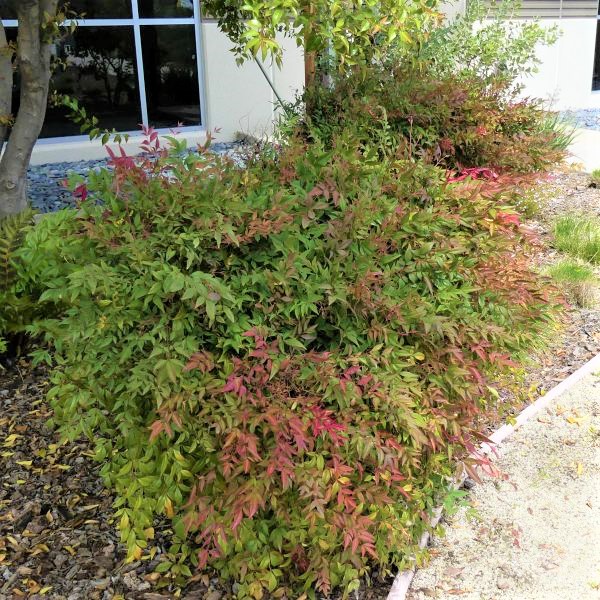

Dwarf Alberta Spruce
Picea glauca 'Conica'
17 reviews


Dwarf Alberta Spruce
Picea glauca 'Conica'
17 reviews
$0.00
$0.00
30% Off
1 Gallon
We are sorry, product is currently out of stock due to seasonal availability. Please check the "Related plants available in your area" section below
Why Dwarf Alberta Spruce?
The Dwarf Alberta Spruce is a popular choice for landscaping due to its compact size and unique conical shape. It is an evergreen tree that typically grows to a height of 5-10 feet. It is slow-growing, making it a great option for smaller gardens or landscapes where space is limited. It also requires minimal maintenance and is tolerant of harsh winter weather.
Related plants available in your area
Sunlight
Dwarf Alberta Spruce requires full sun to partial shade, meaning it needs at least 6 hours of direct sunlight per day to grow and thrive.
Watering
Dwarf Alberta Spruce has a moderate watering requirement. It prefers moist, well-drained soil and should be watered regularly, especially during hot and dry periods. It is important to avoid overwatering, as it may lead to root rot.
Fertilizing
Dwarf Alberta Spruce requires a balanced fertilizer with a ratio of nutrients such as nitrogen, phosphorus, and potassium. It is recommended to use a slow-release granular fertilizer specifically formulated for evergreen trees, following the manufacturer's
Ever wondered how could a tree be so small yet so strikingly beautiful? Well, this dwarf Alberta spruce is a clever landscape design idea that is both adorable and undeniably functional.
Energized by shades of vivid bright green, the dwarf Alberta spruce tree gives your outdoor space a fresh mood. When taking a closer look, you couldn’t help but marvel at its intricate details. Its pyramidal shape, attractive dense foliage, aromatic green needles, and year-round pop of color -- all create a magical emerald yard!
This cone-shaped slow growing evergreen is a hardy and durable plant that grows up to 10 to 13 ft. tall and 7 to 10 ft. wide, with a growth rate of just 2 to 4 inches a year.
You’ll be amazed at how dwarf Alberta spruce trees are easy to care for! No matter how you are going to incorporate them in your landscape design, all you need to do is to care for these evergreen trees in the right way to enjoy their lush greenery. For the best outcome, plant this drought-tolerant dwarf tree in areas with direct sunlight to partial shade in moist, well-drained soil. Plus, when planting and coming early spring, fertilize it with a slow-release fertilizer to replenish the nutrients in the soil.
What is truly amazing about the Alberta spruce dwarf is that it opens up a world of possibilities to play up the architecture of your abode! Flank your front door or garden entrance with a pair of dwarf Alberta spruce to draw your visitors’ attention to the peaceful greenery before they step into your home. Throw in some extra color and height to your garden bed to give your space a unique character and add visual interest to your landscape design. In addition, if you have a walkway, grow a couple of dwarf Alberta spruces along with other plants to welcome your guests with a heartwarming entrance.
It’s about time to freshen up your yard. Order your dwarf Alberta spruc
Plant Information:
| Botanical Name: | Picea glauca 'Conica' |
| USDA Zones: | 2-6 |
| Water: | Moderate |
| Exposure: | Full Sun |
| Soil Needs: | Well-Drained |
| Mature Height: | 5 - 8 feet |
| Mature Spread: | 3 - 4 feet |






Pollination Info
Pollination Information for Dwarf Alberta Spruce (Picea glauca 'Conica')
Dwarf Alberta spruce is a slow-growing, cone-shaped evergreen tree that does not produce showy flowers like other plants. As a result, pollination is not a concern for this species.
However, if you have other plants nearby that require cross-pollination, you may want to consider planting them close to the dwarf Alberta spruce. This tree will attract pollinators such as bees, butterflies, and moths, which can then visit the other nearby plants.
In general, evergreens such as the dwarf Alberta spruce rely on the wind for pollination. Their pollen is released from male cones and carried by the wind to female cones, where fertilization occurs.
If you are interested in propagating dwarf Alberta spruce, you can do so through vegetative propagation methods such as cuttings or grafting. This will produce a new tree that has identical characteristics to the parent.
FAQ
Dwarf Alberta Spruce (Picea glauca 'Conica') FAQ
General Information
What is a Dwarf Alberta Spruce?
A Dwarf Alberta Spruce is a small coniferous tree that is native to North America. It is a popular choice for landscaping due to its compact size and attractive shape.
How tall does a Dwarf Alberta Spruce grow?
A Dwarf Alberta Spruce typically grows to a height of 6-8 feet, but in ideal growing conditions, it can reach up to 12 feet tall.
What are the characteristics of a Dwarf Alberta Spruce?
A Dwarf Alberta Spruce is a slow-growing evergreen tree that has a conical shape. Its needles are short and blue-green in color, and it produces small cones. It is also very hardy and can survive in a range of temperatures and soil types.
Care and Maintenance
What is the best soil type for a Dwarf Alberta Spruce?
A Dwarf Alberta Spruce prefers well-draining soil that is slightly acidic with a pH between 5.5-6.5.
How often should I water my Dwarf Alberta Spruce?
Dwarf Alberta Spruce trees require consistent moisture, especially during their first growing season. Water them deeply once or twice per week, depending on the weather conditions, to keep the soil moist but not waterlogged.
How much sun does a Dwarf Alberta Spruce need?
Dwarf Alberta Spruce trees prefer full sun to partial shade and should be planted in an area where they can receive at least 6 hours of direct sunlight per day.
How often should I fertilize my Dwarf Alberta Spruce?
Fertilize your Dwarf Alberta Spruce tree once a year in early spring. Use a slow-release granular fertilizer that is balanced or slightly higher in nitrogen.
Pests and Diseases
What pests and diseases are common to Dwarf Alberta Spruce trees?
Dwarf Alberta Spruce trees are susceptible to a number of pests and diseases, including spider mites, spruce budworms, and needle cast diseases. Preventative measures, such as proper watering and fertilization, can help prevent these issues.
How can I tell if my Dwarf Alberta Spruce is infected with pests or diseases?
Watch for signs of yellowing, wilting, or premature needle drop. Other symptoms may include brown, dry spots on the needles, distorted needles, and webbing or insects on the tree.
What can I do to treat or prevent pest and disease issues?
Prevention is key when it comes to pest and disease issues in your Dwarf Alberta Spruce tree. Keep the tree healthy by providing it with proper care and maintenance. If you suspect an infestation, contact a professional arborist for treatment recommendations.
Planting & Care
Planting & Care for Dwarf Alberta Spruce (Picea glauca 'Conica')
Planting
Choose a sunny or partially shaded spot with well-draining soil. The hole should be twice as wide as the root ball but no deeper than the root ball. Remove any rocks or debris from the hole, and mix in some compost or organic matter. Place the root ball in the hole and backfill with soil, making sure to tamp it down gently. Water thoroughly.
Care
- Water regularly during the first year to establish the root system. After that, water only during dry spells.
- Fertilize in early spring with a slow-release fertilizer formulated for evergreens.
- Prune in late winter or early spring to control its size and shape.
- Protect from strong winds, which can damage the delicate foliage.
- Monitor for pests and diseases, such as spider mites, aphids, and needle cast.
Check Out These Verified Customer Reviews:
Customer Reviews
4.7 out of 5 based on 17 reviews
Thank you! Your review has been submitted.
The Dwarf Alberta Spruce adds a lovely touch to my garden.
Beautiful shape and color.
Excellent customer service.
Item has been added to your cart.






















